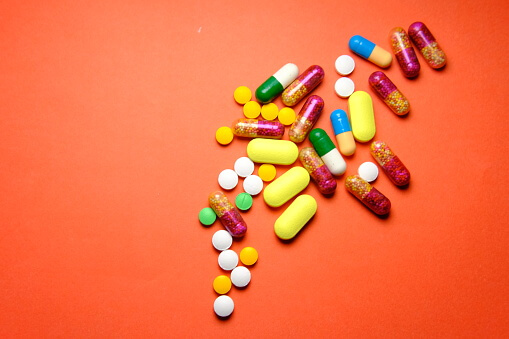Fatty Liver Disease, the Silent Killer that Took George Michael
8 years ago | Liver Health
By Joy Stephenson-Laws, JD, Founder
Music icon and sex symbol George Michael was practically unrecognizable before dying at the age of 53 on Christmas Day. Before his death, he was visibly very overweight, a complete contrast from the many years his fans were used to seeing him wear tight jeans and leather jackets. But what we could not see on the inside is part of what actually killed him. A fatty liver!
When it comes to weight, we sometimes focus so much on physical appearance that we forget about the importance of making physical health a priority. How do I get this cellulite off my thighs? How do I get rid of that muffin top? How can I get a flatter stomach? But instead of focusing on our outward appearance, perhaps one of the questions we really need to be asking ourselves is: How can I make sure my liver is not too fat?
The liver is one of the largest and most important organs in our bodies. It is actually our own personal detoxification system, removing harmful substances from our blood. It even removes byproducts from medications we take. The liver also converts nutrients from the food we eat into materials our bodies can use, stores these materials and gives them to our cells when they need them. When our liver gets too fat, it is difficult for the liver to perform these functions, and we are prone to diseases and early death.
So what is a fatty liver?
The American Liver Foundation says it is normal for the liver to have some fat. If more than 5-10 percent of the liver’s weight is fat, then it is referred to as a fatty liver.
An excessively fat liver is a damaged or unhealthy liver. Too much alcohol consumption may cause the liver to be fatty, but people who consume no alcohol at all can still have a fatty liver (non-alcoholic fatty liver disease (NAFLD).
According to the American College of Gastroenterology, NAFLD “is a very common disorder and refers to a group of conditions where there is accumulation of excess fat in the liver of people who drink little or no alcohol.”
There is another stage of fatty liver disease, even more serious than NAFLD, called nonalcoholic steatohepatitis (NASH). If the liver has excessive fat but no damage, this is generally referred to as NAFLD. If the liver has excessive fat and signs of inflammation and liver cell damage, this is considered nonalcoholic steatohepatitis.
According to Johns Hopkins Medicine, about 10-20 percent of Americans have NAFLD, and about 2-5 percent have NASH.
Neither stages of fatty liver disease are caused by alcohol, but alcohol abuse may contribute to further damage.
What causes a fatty liver?
Causes of fatty liver include drugs, being overweight or obese and leading a sedentary lifestyle.
George Michael had risk factors (e.g. drugs and being overweight) for fatty liver, but otherwise healthy looking people may have this condition as well.
For example, take a look at the story of marathon runner Nick Giordano. Giordano considered himself a “health nut” and in 2004 was training for a marathon. He appeared to be in good shape despite a few extra pounds.
Two years later, during a routine physical, his doctor saw he had elevated liver enzymes, which is a sign of inflamed or damaged liver cells. After months of testing and a liver biopsy, the doctor discovered he had NAFLD.
Giordano was shocked. He did not appear to be in the danger zone as far as risk factors were concerned, and he did not experience any noticeable symptoms. He followed his doctor’s recommendations, made healthy dietary changes and cut out alcohol and is now successfully controlling his NAFLD.
How can you be proactive?
“The liver can regenerate most of its own cells when they become damaged. However, if injury to the liver is too severe or long lasting, regeneration is incomplete, and the liver creates scar tissue,” reports the U.S. National Library of Medicine.
The good news is most liver disease is preventable, and some liver damage can be reversed or controlled with certain lifestyle changes. The key is to be proactive before it is too late.
- Resistance training. Results from a study published in 2015 show resistance training may reduce fat in the liver. In the study, 82 people with fatty livers between the ages of 20-65 were put either on a resistance training program or a stretching program. The participants were asked to maintain their usual diets and to keep taking their prescribed medications. After only three months, researchers found resistance training reduced liver fat in some of the participants.
- Maintain a healthy diet and ensure you are receiving adequate amounts of your nutrients. For example, a study shows vitamin C deficiency may increase liver cholesterol and triglycerides, which can be a sign of fatty liver disease. For tips on a healthy liver diet, click here.
- Avoid excessive alcohol consumption. The maximum amount you should drink per week depends on age and whether you are male or female. To see where you stand, check out this previous blog.
- Get routine physicals. Ask your doctor for blood tests, ultrasounds and liver tests that may determine whether your liver is fatty. For example, you can specifically ask for a test that measures your levels of alanine aminotransferase (ALT), which is an enzyme mainly found in the liver. High levels of this enzyme may be an indication of liver swelling or trauma. To learn more about other liver tests you can ask your doctor for, click here.
How about a liver cleanse or detox?
Detoxing seems to be a fascination in today’s culture, and it has been for some time. Even Hippocrates recommended fasting for health. But according to the National Institutes of Health, “[t]here isn’t any convincing evidence that detox or cleansing programs actually remove toxins from your body or improve your health. Weight loss on a detox diet may be because these diets are often very low in calories.”
Harvard Medical School says, “[t]he human body can defend itself very well against most environmental insults and the effects of occasional indulgence ... If you're generally healthy, concentrate on giving your body what it needs to maintain its robust self-cleaning system — a healthful diet, adequate fluid intake, regular exercise, sufficient sleep, and all recommended medical check-ups.” If you feel unhealthy, you are better off seeking the advice of a doctor as opposed to a detox spa.
If you really take a minute to think about this, you may be even more aware of why you want to put whole, nutritious foods in your body. Your liver will do its job, but you have to hold up your end of the bargain by supplying your body with the nutrients it needs.
Enjoy your healthy life!
The pH Health Care Team includes recognized experts from a variety of health care and related disciplines, including physicians, health care attorneys, nutritionists, nurses and certified fitness instructors. To learn more about the pH Health Care Team, click here.







